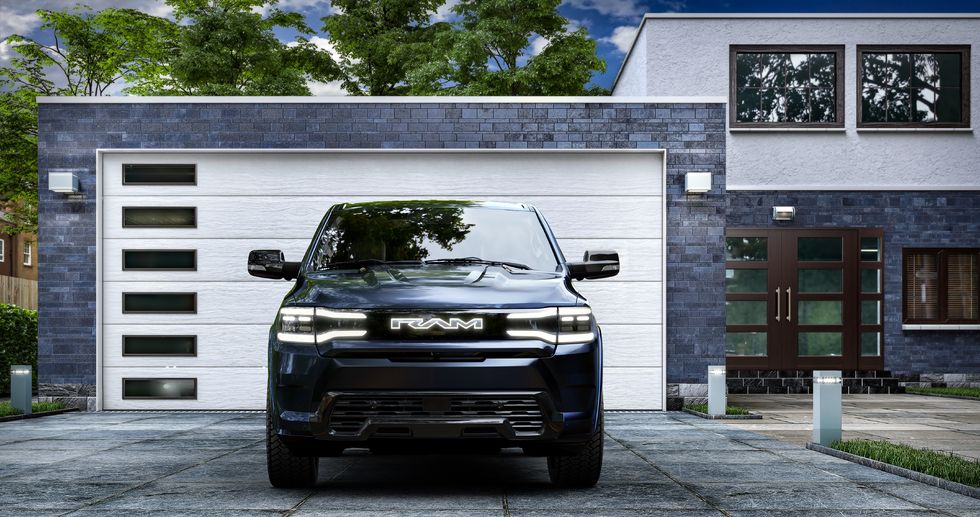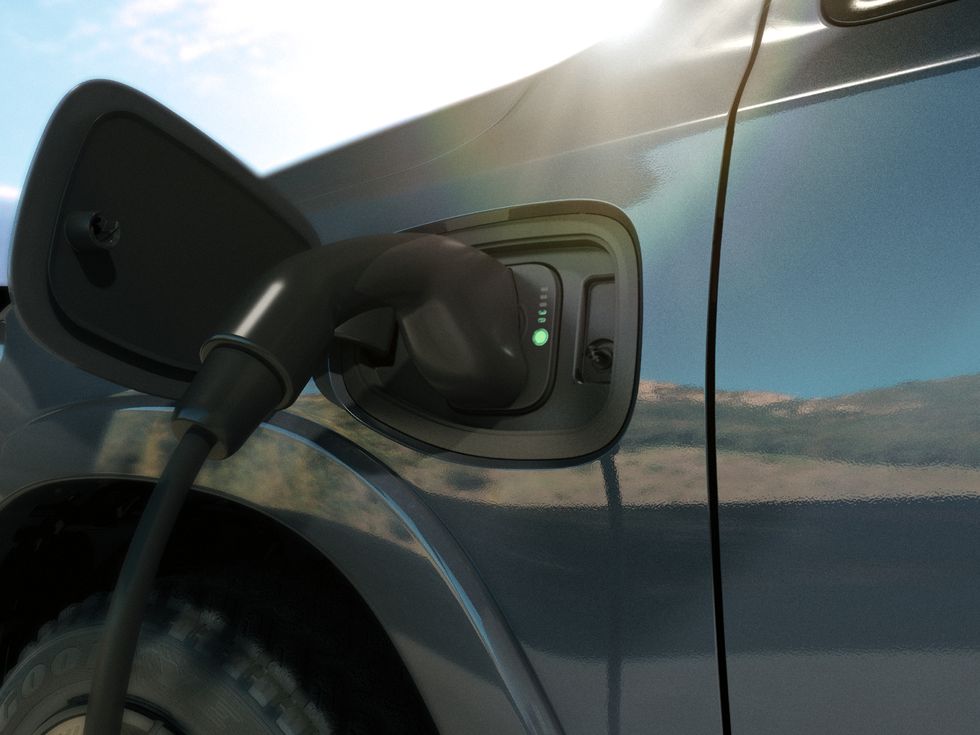In many ways, it seems like the concept of the oversized, hyper-powered, EV pickup or SUV falls right into the ethos of zero calorie soda, or artificial sweeteners. Think about it–EV trucks are big vehicles that outperform their traditional equivalents, sold as a completely guilt-free alternative. But guilt-free is a misnomer, and that doesn’t mean that either of those things are without any downsides. It seems like RAM missed that memo; the latest RAM REV 1500 EV pickup truck will come with a 229-kilowatt-hour battery for a whopping 500 miles of range. It’s the truck equivalent of drinking a whole 12-pack of diet soda in one sitting. Sure, maybe one or two cans aren’t so bad, and better than the regular stuff, but I’m not sure chugging all that soda is good for your kidneys.
The RAM’s whole oversized battery program likely comes directly from Americans’ obsession with range. Certainly, there’s nothing exactly wrong with wanting a car that has good range. Cars like the Mini Cooper SE or Mazda MX-30 deserve all the ire they get–there’s no need to pay a lot of money not to go very far. But, just check out the comments on any given model launch, and you’ll be inundated with armchair enthusiasts obsessed with one particular EV brand in a manner that rivals the most staunch of K-pop fans. We want the range, we don’t rightly care how we get there.
Are buyers wrong for wanting that extra range? Maybe. It’s unclear. By and large, many consumers aren’t quite sure if an EV can work for them. Range anxiety and charging infrastructure are still top concerns by most EV curious, and no doubt many feel that having a big car that can do a lot of miles can allay those concerns. But, no one particularly cares how much energy the car uses to do so.
According to Stellantis, the RAM REV has a targeted range of 500 miles. That’s very good, but it will take 229 kWh worth of battery to get there. By comparison, Hyundai’s latest EV, the explicitly sedan-shaped Ioniq 6 can turn 240 miles in standard range trim. That’s a little less than half the range, but the Ioniq 6’s battery is downright teensy, at a mere 53 kWh. The RAM REV 1500 needs more than four times the battery to go a little more than twice as far as the Ioniq 6. Even amongst the behemoth EV pickup trucks, the RAM REV needs about 100 kWh to go a mere 180 extra miles over the extended-range Ford F-150 Lightning. To make matters more absurd, Stellantis has plans for an even bigger battery pack to go underneath the RAM REV.
If this is the future of the American electric vehicle, then we have lost the plot. If we were concerned about charging times and running costs, then the behemoth 229-kilowatt-hour RAM REV would likely take at least an hour on hyperfast (and very expensive) DC fast charging stations. If we wanted to improve our environment, then trucks like the RAM REV 1500 aren’t all that great, either. Although EVs don’t have any tailpipe emissions, battery manufacturing isn’t a zero-cost endeavor. It’s rife with the mining, transport, and refinement of precious metals. This process isn’t exactly the cleanest, even if scientists and analysts alike claim the result is cleaner than the average ICE vehicle. We should be using our resources wisely, and that doesn’t mean we should just do whatever without any thought.
Just consider what Polestar had to say back in 2021 about the impact its EVs have. Technically, manufacturing the Polestar 2 is dirtier than an equivalent Volvo XC40 ICE-powered car. The Polestar takes more materials, and 7 tons of CO2 come from manufacturing its 78 kWh battery alone. Obviously, the Polestar’s overall life cycle is cleaner, since it has no tailpipe emissions. But manufacturing a bigger battery, or a heavier car that uses more stuff, no doubt will have more strain on the environment. By 2023, the brand had claimed its per-unit emissions are down, in part because the brand went out of its way to refine supply chains and use less while building its cars.
Every day we’re on the internet, we’re reminded that the traditional sedan shape is completely dead, and very much useless, as analysts, car buyers, and journalists have extolled the virtues of crossovers and pickups. Two of the most affordable and not-so-big EVs, the Chevy Bolt EV and EUV are dead with no replacement on the horizon. In fact, GM killed the cars to make more large electric trucks. Yet, the most efficient EVs on sale (Lucid Air, Hyundai Ioniq 6, and Tesla Model 3) are all sedan shaped. Sedans are generally lower to the ground, lighter, and more aerodynamic; those three aforementioned cars range from 0.2 to 0.23 cD. We may have tried to greenwash the image of the full-sized pickup truck and SUV by sticking batteries underneath them, but at the end of the day, you can’t cheat physics. We’re asking batteries to propel a big hulking massive truck-shaped thing through the air at high speed. Engineers may be modern-day magicians, but when it comes down to the nitty-gritty, you can’t cheat physics. A smaller, lighter, more aerodynamic-shaped vehicle will consume less.
Less, is less, actually.

















